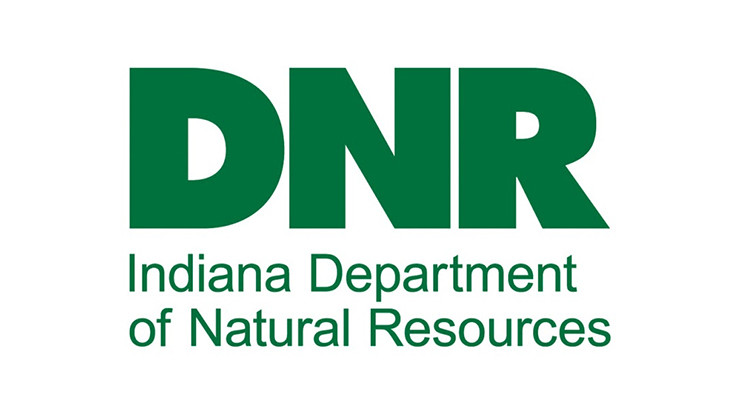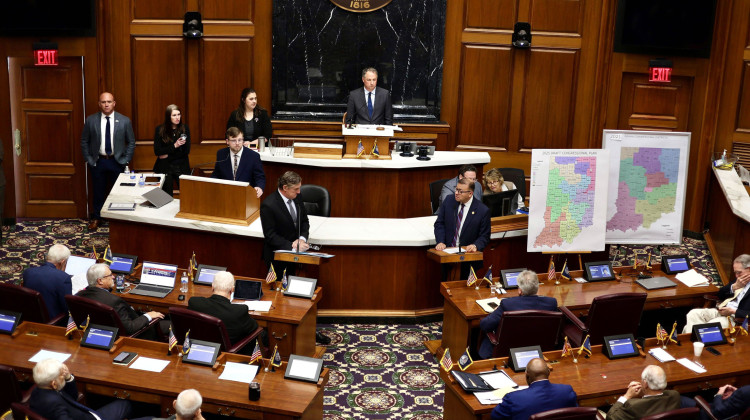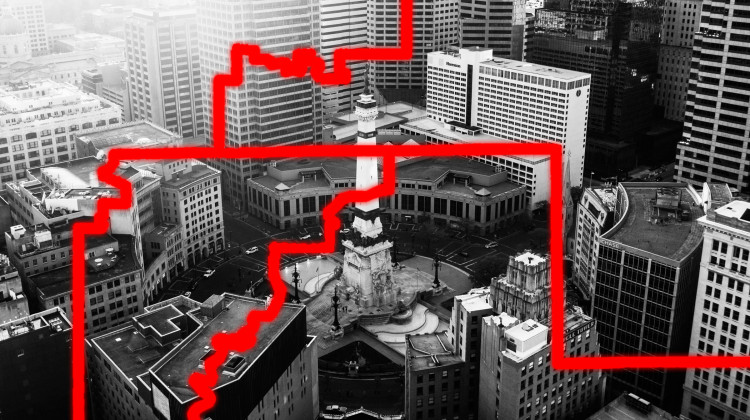
A program in the state’s Department of Natural Resources also provides grants to these groups and processors to help cover the cost of making the deer edible and fit for donation.
Indiana Department of Natural Resources websiteBy SARAH BOWMAN - The Indianapolis Star
INDIANAPOLIS (AP) — When Debra Treesh’s children moved away, she and her husband didn’t need as much venison, but they didn’t know what to do with the leftovers. That’s when she contacted a local food bank.
“And they went nuts,” said Treesh, who owns a small butcher shop with her husband in northwest Indiana. “They said they don’t get many meat donations and it’s one of the most important things.”
That spawned an idea: Could hunters donate some of their deer to help feed hungry individuals across Indiana? And so it began. What at first was just a one-time donation has since turned into a passion project.
She officially launched her nonprofit, Hoosiers Feeding the Hungry, in 2011 — making this year its 10th anniversary. Treesh’s group now works with nearly 85 meat processors and 500 hunger relief organizations statewide to help the deer meat that hunters provide get to those who need it. All told, they’ve donated enough venison to provide millions of meals.
Her organization isn’t the only one with this mission; it partners with a hunter’s club in southwest Indiana doing the same thing. A program in the state’s Department of Natural Resources also provides grants to these groups and processors to help cover the cost of making the deer edible and fit for donation.
“We all fall on tough times and someone is there wanting to help,” said Capt. Jet Quillen, who is in the DNR’s law enforcement division and runs the Sportsmen Benevolence Fund that provides the grants. “Whether that’s hunters or a state law enforcement agency, someone is there for them.”
Since Treesh first started her group, she estimates they’ve been able to donate about 500,000 pounds of venison. Each pound can provide about four meals, she said, meaning they’ve provided nearly two million meals over the last decade.
Their partner group, Hunters for the Hungry out of the Dubois County Sportsmen’s Club, has donated roughly 72,000 pounds of venison. That equates to a quarter million meals, according to Gene Kuntz, who runs the group across four counties in southern Indiana.
That’s no small thing from either group, Treesh said.
“When I look at the numbers, it’s hard to believe that I said two million meals of venison. That’s a lot,” she said. “But also it unfortunately doesn’t even scratch the surface, especially during COVID times.”
In Indiana, nearly 850,000 people are facing hunger and more than a quarter of them are children, according to Feeding America, the nation’s largest hunger relief group. That amounts to one in every eight people in the state being food insecure — and that was in 2019.
Across the country, and including here in Indiana, the coronavirus has caused millions of Americans to newly experience food insecurity. Projections from Feeding America showed the rate of food insecurity increasing in every single Indiana county in both 2020 and 2021.
“There are a lot of people unemployed and COVID has hurt a lot of folks,” Kuntz said. “They are focused on keeping the lights on” and food becomes an afterthought.
Not only that, but shortages in labor and a slowed supply chain has the price of meat going up. Treesh recalled a recent grocery trip when she saw it was $6.99 for a pound of ground beef, the cheapest meat.
“I can see why people can’t afford to get meat,” Treesh said. “That’s expensive.”
And local food banks and nonprofits are also seeing fewer donations, which can be attributed to the pandemic, said Quillen with the DNR. But there’s another thing that’s come out of the pandemic, he added: People are spending more time outside.
The agency has seen record use of state properties and even more hunters and fishers signing up for licenses. That’s an opportunity to help more people, he said.
“There are a lot of new hunters and fishermen,” Quillen said, “and we need to educate those new folks and let them know this program is available.′
The process is simple.
Treesh recommends that deer hunters first check the list of approved processors to know where they can take it, and then check with that butcher to make sure they have availability to take it.
Only processors and butchers who are food safe-certified with the Board of Animal Health and DNR can be used for this program.
Then all the hunter has to do is go out hunting, legally take a deer, field dress it and then drop it off at the processor.
“I’m a deer hunter myself and a lot of hunters would like to go out and harvest more deer but they can only eat one and then they’re done,” Kuntz said. “But now we have a program where hunters can go out and take another deer or two and donate it to feed the hungry.”
The butchers process all the deer meat into ground venison, which gets the most out of it and is the most versatile for families. The processor then contacts different food banks and pantries in their area to let them know they have venison available, and that organization will come and pick it up.
They will also reach out to Treesh or Kuntz’s group to cover the cost of the processing.
The cost to process a deer is usually between $100 to $150, though they sometimes give the groups a deal for around $75. The groups will get funds from donations in their communities, but they also can apply for grants from the DNR’s Sportsmen Benevolence Fund. Those grants help pay the processors to cover their costs.
“We’re the law enforcement division of DNR and want to serve our public and the citizens of Indiana, and this is just another way to give back,” Quillen said. “It truly is a partnership between all of us, which is with one goal to donate back to those who need it.”
Still, Quillen said he’s surprised to learn how few people know about this program. That’s why their main goal is to expand it and get the word out.
The number of deer donated peaked about five years ago at just over 1,000 deer, Treesh said, but has been on the decline in the last few years. Treesh, Quillen and Kuntz would all like to see that trend turned around as more people get outdoors.
There are a few different ways that these groups are trying to do that, and one that Treesh has started is called “give five.” While some hunters might not be able to donate an entire deer, which usually is around 50 pounds, processors will ask if the hunter is willing to donate five pounds when they bring their deer in.
“We can all give five pounds,” Treesh said, “because what’s five pounds?”
Treesh is also asking all those who know about the program to tell two other people, even if they aren’t hunters. Those who don’t hunt can still donate to the Sportsmen Benevolence Fund or Hoosiers Feeding the Hungry to help cover the costs for processing. Quillen said he thinks many other hunters and individuals would participate, if only they knew about the program.
Kuntz said his group also has started doing a giveaway in recent years to encourage more hunters to donate. With some of the funds donated to Hunters for the Hungry, the group purchases a hunting rifle and then everyone who donates a deer gets an entry into a raffle for the gun.
“I think that’s really helped a lot because people say they can help people and get a chance to win the prize,” Kuntz said.
Kuntz said he tries to donate at least one deer each year, but last year he got a new person involved, too. His 14-year-old grandson took his first deer last year and their family didn’t need the meat. Kuntz said he explained the program to him and his grandson immediately said he wanted to “give that to feed people.”
“That made a full circle impression on him that not only can I, as his grandpa, take him out to hunt, but we can donate this deer to help feed the hungry,” Kuntz said. His grandson is hoping to be able to do the same this year, and Kuntz hopes to see more young people get involved with this effort.
The shotgun hunting season in Indiana kicked off just a few weeks ago and the donations have been coming in. But they will always take more, Kuntz said.
“When you consider everything we’ve done,” he said, “it’s a testament to what we’re doing and also the fact that the need is still there.”
If you would like to get involved, you can find more information online for the Sportsmen Benevolence Fund at www.in.gov/dnr/law-enforcement/sportsmens-benevolence-fund/. There they also have information about how to contact Hoosiers Feeding the Hungry and the Dubois County Sportsmen’s Club.
—-
Source: The Indianapolis Star
 DONATE
DONATE







 Support WFYI. We can't do it without you.
Support WFYI. We can't do it without you.